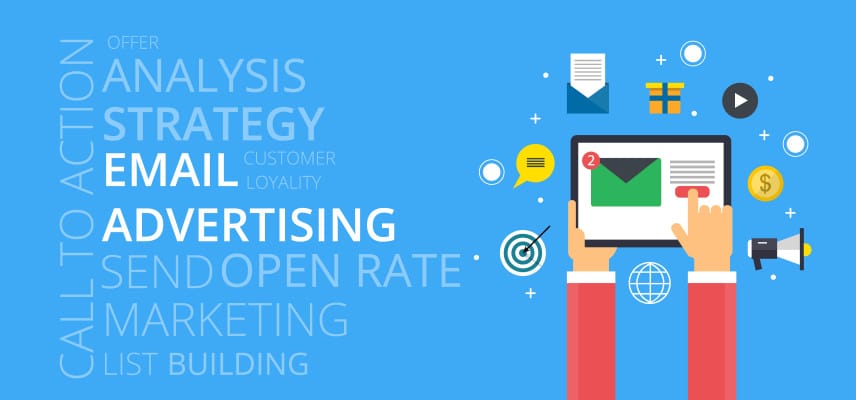8 Steps to Building an Opt-In Email List Using Landing Pages
Email marketing is a valuable and cost-effective way to reach your target audience and build lasting relationships with your subscribers. Whether you’re promoting a product, a service, or a cause, email marketing allows you to communicate with your audience on a regular basis and provide them with relevant and engaging content that meets their needs and interests.
But how do you build an email list from scratch, and ensure that it’s high-quality, valuable, and relevant to both your business and your subscribers? One of the most effective ways to do so is by using landing pages, which are dedicated web pages designed to convert visitors into leads by offering them a valuable resource or incentive in exchange for their contact information.
In this post, we’ll explore eight steps to building your own opt-in email list using landing pages, from defining your target audience and creating a valuable offer to designing your landing page, setting up your opt-in form, and promoting your landing page to drive traffic and increase sign-ups.

Step 1: Define Your Target Audience
The first step in building an effective email list using landing pages is to define your target audience. This involves understanding who your ideal customers are, what they need, and how you can help them solve their problems or achieve their goals.
To identify your target audience, you can start by researching demographics, psychographics, and pain points, as well as analyzing website traffic and social media engagement. You can also use tools like Google Analytics, customer surveys, and social listening to gather insights about your audience’s behavior and preferences.
Once you have a clear picture of your target audience, you can segment them into different groups based on their interests, behaviors, and demographics. This allows you to create targeted landing pages that resonate with each group and offer them a valuable resource or incentive that meets their specific needs.
Step 2: Create a Valuable Offer
The second step in building an effective email list using landing pages is to create a valuable offer that entices visitors to sign up for your email list. This offer, also known as a lead magnet, can be anything from an ebook or a whitepaper to a webinar or a free trial.
To create a compelling offer, you need to understand what your target audience wants and needs, and how your offer can help them achieve their goals or solve their problems. You can also use persuasive language and highlight the benefits of your offer, such as saving time, money, or effort, and emphasizing the social proof and credibility of your brand.
It’s also important to optimize your lead magnet for different stages of the customer journey, from awareness to consideration to decision. This means creating different offers that cater to each stage and using a targeted messaging and tone that aligns with your brand.
Step 3: Design Your Landing Page
The third step in building an effective email list using landing pages is to design your landing page. This is the page where your visitors will arrive after clicking on your offer, and it’s where they will decide whether to sign up for your email list or not.
To design an effective landing page, you need to focus on several key elements, including the headline, subheadline, image, copy, and form. Your headline should be clear, concise, and attention-grabbing, and your subheadline should provide additional context and persuasion. Your image should be relevant and engaging, and your copy should be benefit-focused, easy to read, and persuasive.
Your form should be easy to fill out, with minimal fields and clear instructions. It should also include a privacy policy and a checkbox that allows visitors to opt-in to your email list. You can also add social proof, such as testimonials, reviews, or logos, to increase credibility and trust.
It’s also important to optimize your landing page for mobile devices, as more and more people are accessing the internet and filling out forms on their smartphones and tablets. This means using a responsive design that adapts to different screen sizes, and optimizing your page load speed to avoid high bounce rates and low conversion rates.
Step 4: Set Up Your Opt-In Form and Thank-You Page
The fourth step in building an effective email list using landing pages is to set up your opt-in form and thank-you page. This is where visitors will enter their contact information and receive confirmation that they have successfully signed up for your email list.
To set up your opt-in form, you can use a form builder tool like Gravity Forms, Wufoo, or Contact Form 7. These tools allow you to customize your form fields, add conditional logic, and integrate with your email marketing platform, such as Mailchimp, AWeber, or Constant Contact.
It’s important to optimize your opt-in form by using a single-field form, reducing friction and confusion, and adding a privacy policy that assures visitors that their personal information will be kept safe and secure.
Your thank-you page should provide visitors with a confirmation that they have successfully signed up for your email list, and also offer them additional resources or calls-to-action that encourage them to engage with your brand. You can also include social sharing buttons, feedback forms, or discount codes that incentivize them to share your landing page with their networks and spread the word about your brand.
Step 5: Set Up Your Email Marketing Platform
The fifth step in building an effective email list using landing pages is to set up your email marketing platform. This is where you will manage your email list, create and send emails, and analyze your email campaign’s performance and metrics.
There are several email marketing platforms to choose from, including Mailchimp, Constant Contact, AWeber, and Campaign Monitor. Each platform offers different features and pricing plans, and it’s important to choose the one that aligns with your business goals, budget, and email marketing strategy.
Once you’ve chosen your email marketing platform, you can set up your email list, create your email templates, and set up your automated workflows and campaigns. You can also integrate your email marketing platform with your landing page and other tools, such as social media, CRM, and e-commerce platforms, to create a seamless and personalized customer experience.
Step 6: Create Your Email Campaign
The sixth step in building an effective email list using landing pages is to create your email campaign. This involves crafting engaging and relevant content that resonates with your subscribers and encourages them to take action or engage with your brand.
To create an effective email campaign, you need to focus on several key elements, including the subject line, preheader, header, body copy, call-to-action, and footer. Your subject line should be attention-grabbing and relevant to your audience’s needs and interests, and your preheader should provide additional context and intrigue.
Your header should be visually appealing and on-brand, and your body copy should be concise, benefit-focused, and persuasive. Your call-to-action should be clear, prominent, and action-oriented, and your footer should include your contact information, unsubscribe link, and social media links.
It’s also important to segment your email list and personalize your emails based on your subscribers’ interests, behaviors, and preferences. This allows you to create targeted emails that resonate with each segment and increase engagement and conversion rates.
Step 7: Send Your Emails and Monitor Your Metrics
The seventh step in building an effective email list using landing pages is to send your emails and monitor your metrics. This involves tracking your email campaign’s performance and analyzing your open rates, click-through rates, conversion rates, and other key metrics.
To send your emails, you can
use your email marketing platform’s scheduling or automation features, and ensure that your emails are delivered at the optimal time and frequency. You can also use A/B testing to test different email elements and optimize your email campaign for better results.
To monitor your metrics, you can use your email marketing platform’s analytics and reporting tools, as well as Google Analytics or other third-party tools. You can also use heat maps, surveys, and feedback forms to gather qualitative data and insights about your subscribers’ behavior and preferences.
Based on your metrics and insights, you can adjust your email campaign’s content, design, and frequency to improve engagement, conversion, and retention rates. You can also segment your email list further and personalize your emails even more, based on subscribers’ behavior and interaction with your brand.
Step 8: Promote Your Landing Page and Email List
The eighth and final step in building an effective email list using landing pages is to promote your landing page and email list. This involves using a variety of channels and tactics to attract interested visitors and convert them into loyal subscribers.
Some of the most effective channels for promoting your landing page include paid advertising, social media, email outreach, guest posting, and influencer marketing. Each channel has its own strengths and weaknesses, and it’s important to choose the ones that align with your target audience’s behavior and preferences.
Paid advertising, for example, can be effective for targeting specific keywords or demographics and driving traffic to your landing page quickly, but it can also be expensive and competitive. Social media, on the other hand, can be effective for building a community around your brand and promoting your landing page organically, but it can also be time-consuming and require consistent engagement and content creation.
Email outreach and guest posting can be effective for building relationships with influencers and bloggers in your industry, and leveraging their audience to promote your landing page and increase your credibility and reach. Influencer marketing can also be effective for tapping into the influence of popular social media users and celebrities, and leveraging their endorsement to drive traffic and sign-ups to your landing page.
It’s also important to track and measure the performance of your landing page and email list, and continuously optimize them based on feedback, data insights, and user experience (UX) best practices. This can involve using tools like Google Analytics, A/B testing, and conversion rate optimization (CRO) techniques to improve your landing page’s design, messaging, and performance over time.
Conclusion
Building an opt-in email list using landing pages is a powerful and effective way to reach your target audience, engage them with your content, and convert them into loyal customers. By following these eight steps and optimizing your landing page and email funnel, you can create a valuable resource for your audience and grow your brand’s impact and success over time. Remember to focus on creating a compelling offer, designing an effective landing page, setting up your email marketing platform, creating engaging email campaigns, and promoting your landing page to drive traffic and increase sign-ups. Good luck!
